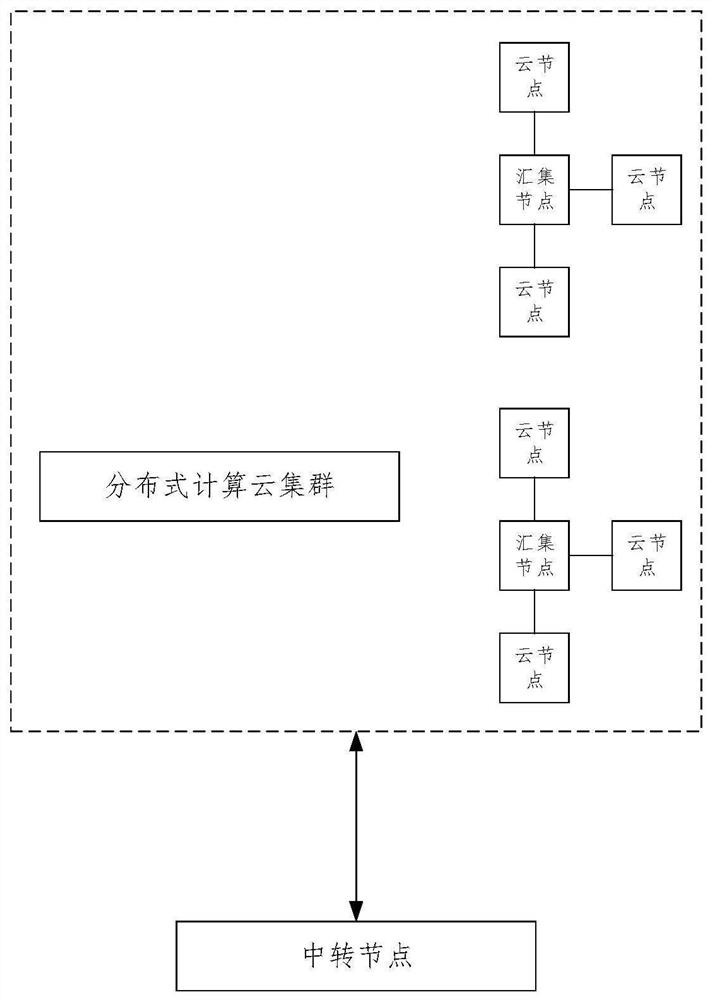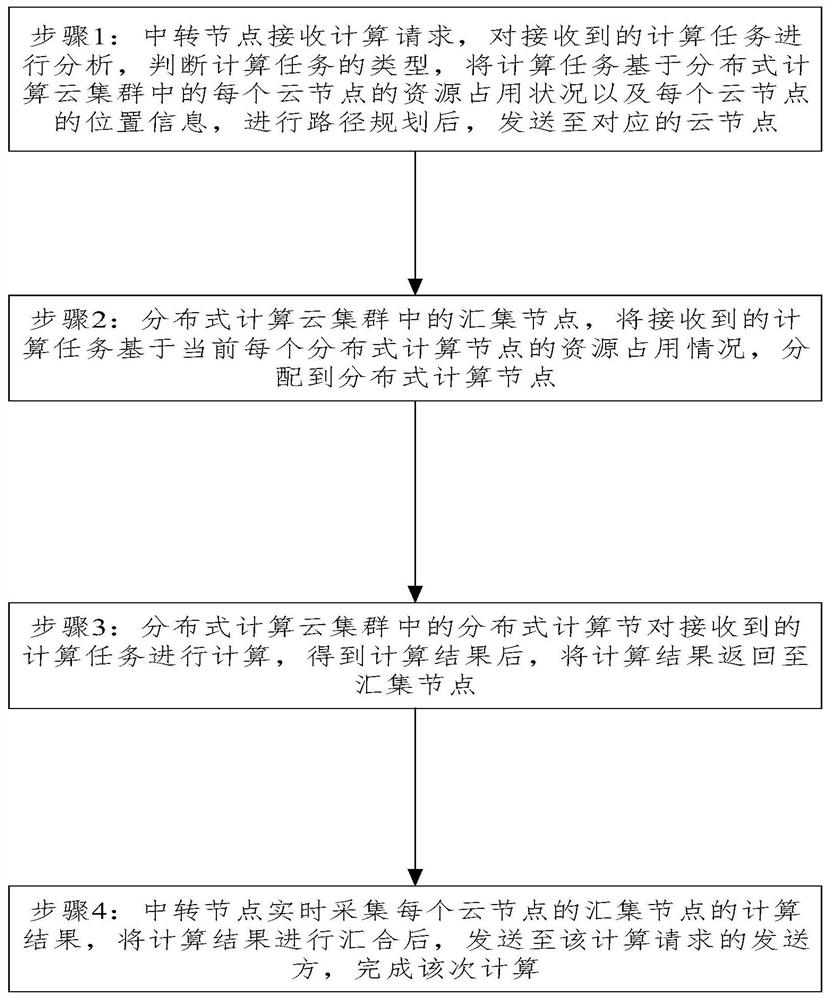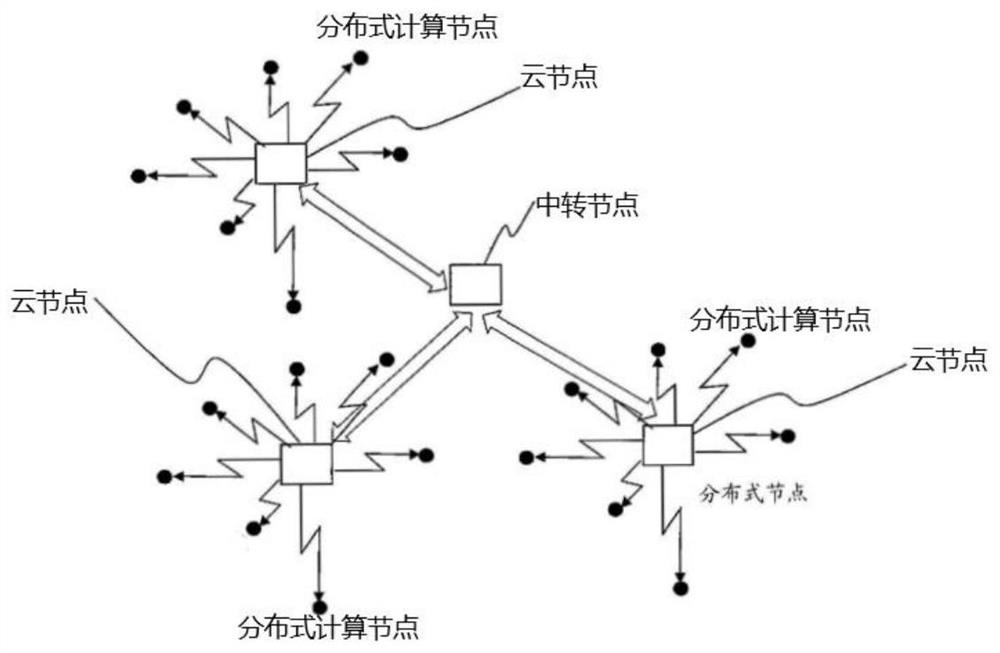Distributed cloud computing system and method based on human brain simulation
A distributed cloud computing, distributed computing technology, applied in the field of cloud computing, can solve problems such as not solving the problem of distributed computing efficiency
- Summary
- Abstract
- Description
- Claims
- Application Information
AI Technical Summary
Problems solved by technology
Method used
Image
Examples
Embodiment 1
[0031] Such as figure 1 As shown, a distributed cloud computing system based on human brain simulation, the system includes: including: a distributed computing cloud cluster, including a plurality of cloud nodes in the cloud node cluster; each cloud node has different computing characteristics; according to According to different computing characteristics, the cloud nodes include at least the following three types: image computing cloud nodes, digital computing cloud nodes, and storage computing cloud nodes; the cloud nodes all include: a collection node and several distributed computing nodes; The converging node is configured to allocate the received computing tasks to the distributed computing nodes based on the current resource occupancy of each distributed computing node; the distributed computing nodes are configured to calculate the received computing tasks After the calculation result is obtained, the calculation result is returned to the collection node; the system al...
Embodiment 2
[0035] On the basis of the previous embodiment, the transfer node includes: a task analysis node configured to analyze the received computing task and determine the type of the computing task; a pathfinding node configured to analyze the computing task based on distributed Calculate the resource occupancy status of each cloud node in the cloud cluster and the location information of each cloud node, and send it to the corresponding cloud node after path planning.
[0036] Specifically, in the existing distributed computing method of processing computing tasks in units of server clusters, a server cluster can only implement one computing task processing method. When there are many computing task processing methods, it is necessary to deploy Only a large number of server clusters can meet the processing requirements of computing tasks, so the construction cost of server clusters is greatly increased. Moreover, the utilization rate of each server cluster is different, and the serv...
Embodiment 3
[0038] On the basis of the previous embodiment, the pathfinding node sends the computing task to the The corresponding cloud node method performs the following steps: randomly select N cloud nodes in the distributed computing cloud cluster; among the selected N nodes, determine a central node whose coordinates are (0,0); define the minimum transmission chain, The transmission minimum chain includes: the transmission minimum chain root node and the transmission minimum chain sub-node; the other nodes that the transmission minimum chain sub-node can connect to; consider the resource occupancy rate L of each cloud node mn , transmission distance P mn , channel security B mm and k value to update the algorithm formula of path planning, where k value is the number of neighbor nodes: m and n represent nodes; data transmission is carried out according to the established path, and the child nodes in the transmission minimum chain transmit the collected data to the parent node , the ...
PUM
 Login to View More
Login to View More Abstract
Description
Claims
Application Information
 Login to View More
Login to View More - R&D
- Intellectual Property
- Life Sciences
- Materials
- Tech Scout
- Unparalleled Data Quality
- Higher Quality Content
- 60% Fewer Hallucinations
Browse by: Latest US Patents, China's latest patents, Technical Efficacy Thesaurus, Application Domain, Technology Topic, Popular Technical Reports.
© 2025 PatSnap. All rights reserved.Legal|Privacy policy|Modern Slavery Act Transparency Statement|Sitemap|About US| Contact US: help@patsnap.com



